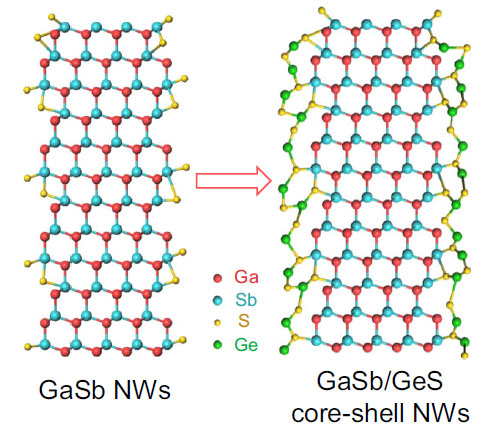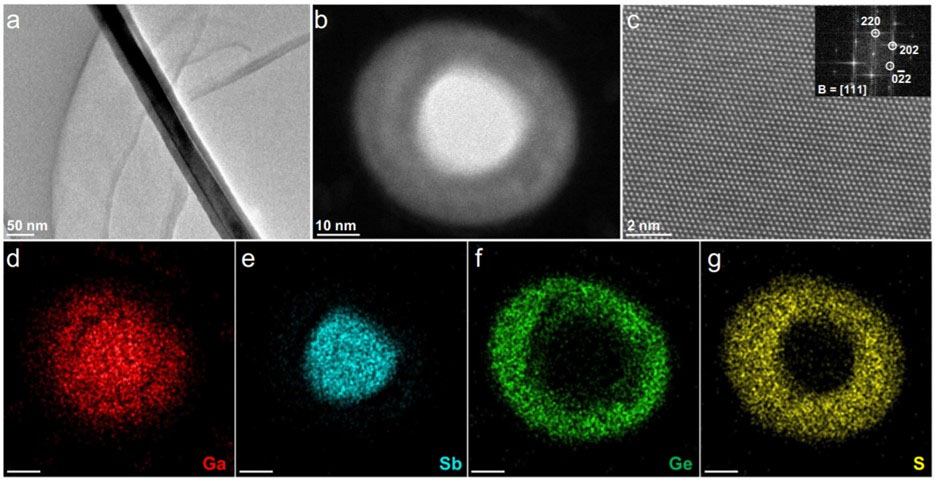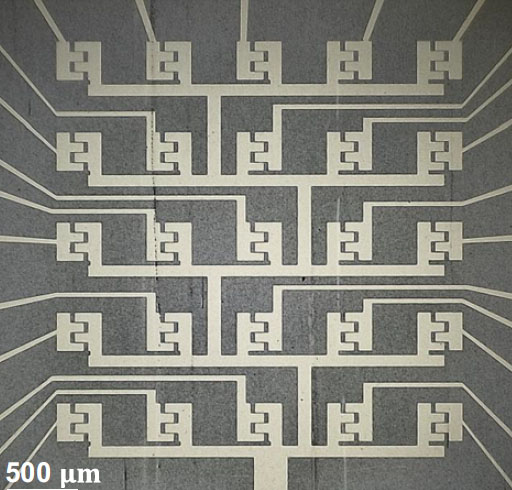| Mar 14, 2024 |
Researchers overcome lattice mismatch issue to advance optoelectronic applications
(Nanowerk News) A research team from City University of Hong Kong (CityU) recently successfully achieved lattice-mismatch-free construction of III-V/chalcogenide core-shell heterostructure nanowires for electronic and optoelectronic applications. This breakthrough addresses crucial technological challenges related to the lattice mismatch problem in the growth of high-quality heterostructure semiconductors, leading to enhanced carrier transport and photoelectric properties.
|
|
The study was published in Nature Communications ("Lattice-mismatch-free construction of III-V/chalcogenide core-shell heterostructure nanowires").
|
 |
| Construction schematics of GaSb/GeS core–shell heterostructure nanowires. (Source: Liu, F., Zhuang, X., Wang, M. et al. https://doi.org/10.1038/s41467-023-43323-x)
|
|
For decades, the challenge of producing high-quality heterostructure semiconductors has persisted, hindered primarily by the lattice mismatch issue at the interface. This limitation has constrained the potential of these materials for high-performance electronic and optoelectronic applications. In a breakthrough effort to overcome this obstacle, the research team initially introduced a pioneering method for the lattice-mismatch-free synthesis of III-V/chalcogenide core-shell heterostructure nanowires designed for device applications.
|
|
“At the nanoscale level, surface characteristics play a pivotal role in governing the material properties of low-dimensional materials. The surfactant properties of chalcogenide atoms contribute significantly to the promise of core-shell heterojunction electronics for addressing evolving technological needs,” said Professor Johnny Ho, Associate Vice-President (Enterprise) and Professor of the Department of Materials Science and Engineering at CityU, who led the research.
|
 |
| Large-area infrared imaging arrays fabricated on InGaAs/GeS core-shell nanowire photodetectors. (Source: Liu, F., Zhuang, X., Wang, M. et al. https://doi.org/10.1038/s41467-023-43323-x)
|
|
“The advances achieved in this study mark a substantial stride towards the efficient utilization of III-V heterostructure semiconductors, paving the way for high-performance applications, particularly in the realm of the Internet of Things (IoT), which may be otherwise unattainable using alternative approaches,” added Professor Ho.
|
|
Aligned with the third-generation detector SWaP3 concept (Size, Weight, Power, Price, Performance), the latest generation of optoelectronic devices is trending towards miniaturization, flexibility and intelligence, Professor Ho emphasized. “The lattice-mismatch-free construction of core-shell heterostructure nanowires holds great promise for next-generation ultrasensitive SWaP3 optoelectronics,” he said.
|
 |
| Lattice-mismatch-free construction of core–shell heterostructure nanowires, taking GaSb/GeS as an example.(Source: Liu, F., Zhuang, X., Wang, M. et al. https://doi.org/10.1038/s41467-023-43323-x)
|
|
This pioneering research encompasses innovative material design, novel process development, and the exploration of new optoelectronic applications. The initial focus involves the investigation of an amorphous shell composed of chalcogenide covalent-bond networks, strategically employed to address the lattice mismatch issue surrounding the III–V core. The successful achievement of effective lattice-mismatch-free construction in the core-shell heterostructure introduces unconventional optoelectronic properties. Notably, these properties include bi-directional photoresponse, visible light-assisted infrared photodetection, and enhanced infrared photodetection.
|



